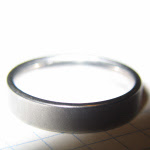It's been quite a while since the first update, and I didn't mean this to be a one shot deal, so I might as will give a status update on pfpf. I haven't had the opportunity to work on a new version, but plenty of comments have been made so far:
On Missing Files. First, my hosting provider, storing my screenshots and files, disappeared without any contact information. I just got a new one set up, so all the links work again.
On Download Sizes. Lots of people don't like the 90MB LabVIEW Runtime download, or that registration is required on NI's website to download. I can't get rid of the runtime download entirely, but there is a smaller (28MB) runtime that may work for you - download here.
On Magnitudes. Several people commented that the dynamic range figures seemed too low. A well-mastered pop track may only show up as having only 3-4db of dynamic range on short/medium time scales, and virtually no range on long time scales. Extremely dynamic symphonic works may only have 16db of dynamic range, where by most "normal" evaluations, there should be more like 40-60db. While the choice of scaling has little effect on comparison of pfpf-derived numbers, it has a great effect on their overall interpretation in relation to other decibel figures
Much of this stems from the choice of percentiles used in the variance measurement (from the 50th to the 98th). If this range were to be doubled, the numbers would probably fall more into line with what people normally expect. This could be accomplished by either doubling the 50-97.7 figure.
On Dynamic Range Manipulation. Michael Jamsmith and I independently came up with the idea of running pfpf's histogram plot in reverse to make a Photoshop-like levels adjustment for loudness on a music track. In other words, a reversible 2-pass dynamic range compressor. Certainly something to work on in my copious free time :)
On Resolutions. One persom didn't like that a greater than 1024x768 resolution is required. I'll see what I can do to make the resolution requirements nicer, but I can't promise much. I might just require that people use a 1680x1050 or higher display.
Bob Katz's comments.
An Alternative Proposal - the Sparklemeter. Chromatix on HA has recently proposed measuring dynamic range by comparing the ratio between a PPM and a VU meter (suitably modified), preparing a histogram of the result values, and computing a figure of merit based on the mean and variance of that histogram. The resulting functionality is similar to the medium- and short-timescale figures that pfpf outputs, but the use of exponential-decay meters is new, as is using direct percentile values from the histogram rather than ranges between percentiles. Using VU/PPM meters gives the result great intuitive meaning for audio engineers, although I fear the required modifications may compromise that. Watch that thread.
27 June 2008
Subscribe to:
Post Comments (Atom)




No comments:
Post a Comment